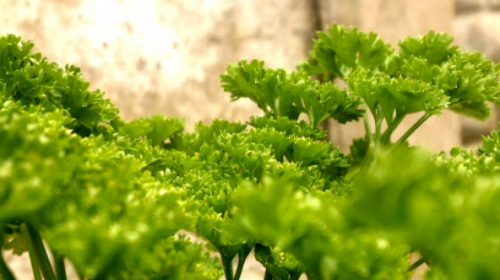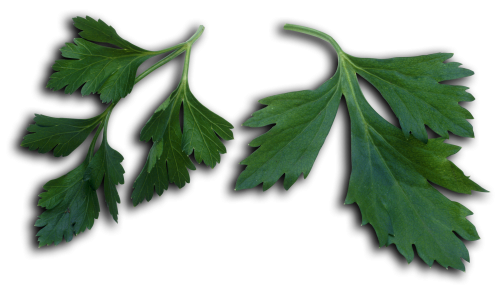Parsley is a biennial, hardy herb. Because parsley flowers in the second year and therefore has less flavor, parsley is grown as an annual herb.
You are viewing the mobile-adapted version of the page.
The one for tablets, laptop and desktop also provides general information, such as origin and cultivation.
Parsley (Petroselinum crispum) is a biennial, hardy herb. Because parsley blooms in the second year and therefore has less flavor, parsley is grown as an annual herb. Sow from mid-February in pots under glass or from early March in open ground in the final spot, in semi-shade. Parsley does not like full sun, then the leaves become limp and yellow.
There is curly leaf and flat leaf parsley. Flat leaf parsley has a stronger flavor than curly parsley. Parsley can be harvested continuously; the leaves are constantly growing.
Plant a few plants in a pot in September and put them in the (cold) greenhouse or outside by the kitchen door, then you will have fresh parsley even in winter.
Bugs
Pierced roots, tunnels and rust-colored streaks on the root: carrot fly (Chamaepsila rosae).
Twisted leaf growth, twisted and thickened stems: stem nematode (Ditylenchus dipsaci).
Fungi & diseases
Parsley is not very sensitive to fungi and diseases.
Other
Parsley likes cool weather. Therefore, place the potted plants in the shade during the hot summer months and keep the soil moist. This also prevents the parsley from flowering too early. Cut away any flowering stems. As a result, the plant produces more leaves.


